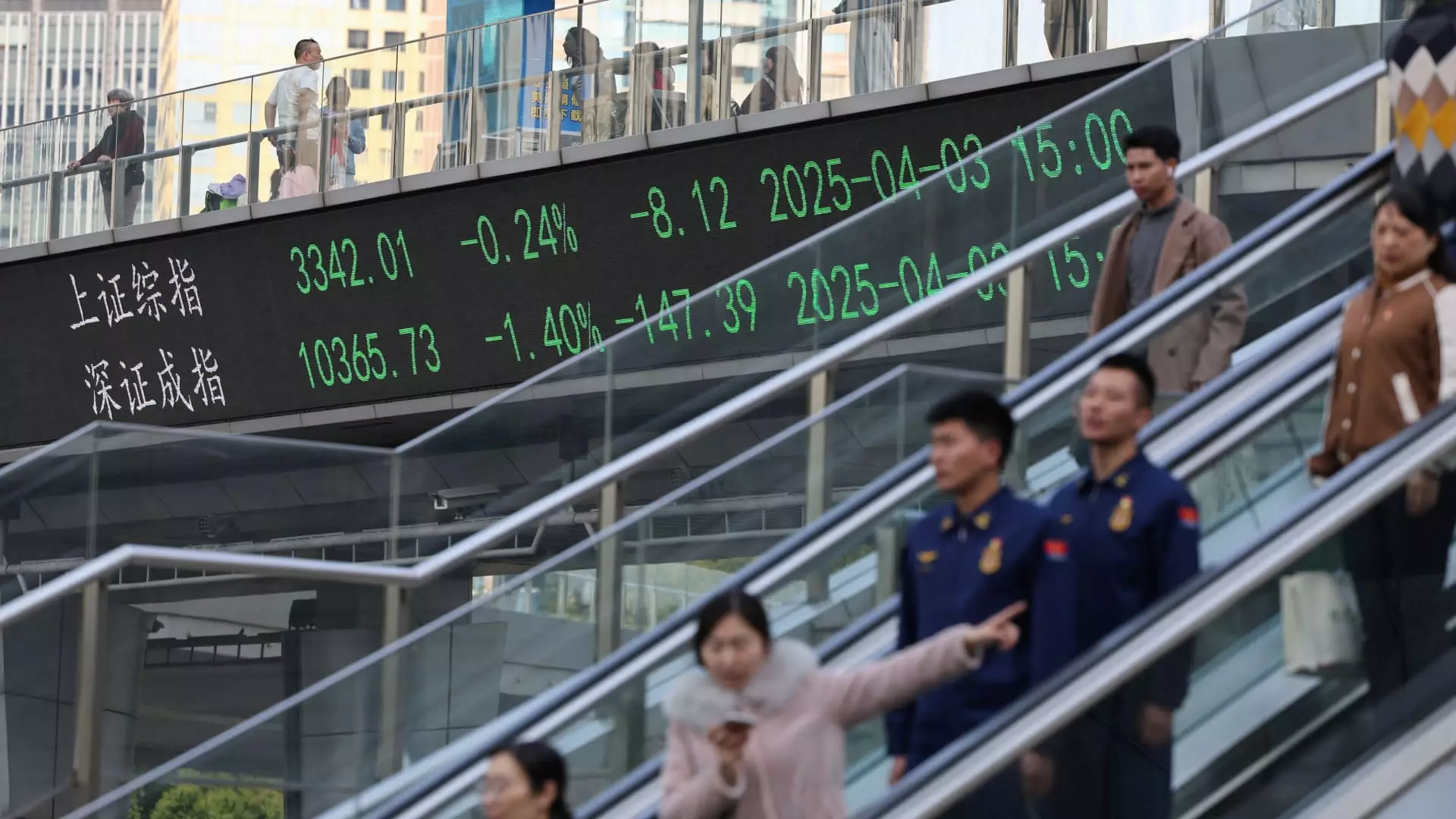Recent developments surrounding U.S. tariffs aimed at China and its Southeast Asian partners have created tremors in the global investment community. Nevertheless, China’s technology sector demonstrates a remarkable ability to withstand these shocks. This resilience is buoyed by an ever-growing interest in homegrown generative artificial intelligence (AI), which suggests that the sector may not only survive but thrive despite tariff-related challenges. Analysts, such as Kai Wang from Morningstar, reveal that most major Chinese tech and consumer firms have limited exposure to the U.S. market, indicating a crucial factor that mitigates the impact of the tariffs. Their local market closures—such as the one on Friday for a holiday—add another layer of complexity to the immediate market reactions, demonstrating that the long-term outlook remains optimistic.
Policy Interventions to Support Growth
Concerns regarding slumping economic performance may compel Chinese authorities to intervene fiscally. China’s finance ministry has alluded to having resources ready for deployment should uncertainties in the domestic economy deepen. As government policymakers prepare for important meetings, markets are closely monitoring their next moves. Increased fiscal support could play a significant role in uplifting sagging investor sentiment during a time marked by geopolitical tension. Indeed, as the world grapples with issues of economic security and trade fairness, adept navigation by policymakers is essential to maintaining market confidence. Analysts are looking towards judicious government actions to foster an environment ripe for growth amid external pressures.
Valuation Differentials Fueling Investor Interest
One of the most compelling data points driving interest in Chinese tech is its comparatively attractive valuations. According to Citi’s equity strategists, the average price-to-earnings (P/E) ratio for leading Chinese tech stocks is a staggering 52% lower than that of their U.S. counterparts, notably the “Magnificent Seven.” Given this significant discrepancy, savvy investors are being drawn towards Chinese tech, presenting an argument for long-term investments that seem undervalued relative to more established markets. This situation is further exemplified by Chinese startups like DeepSeek developing AI models that reportedly outshine their U.S. equivalents, like OpenAI’s ChatGPT, showcasing China’s growing innovation capabilities.
Cautious Optimism in Tech and Consumer Sectors
Investor sentiment is subtly shifting, with almost 25% of international investors becoming more bullish on Chinese technology stocks. The recent peak in equity fund allocations to China suggests that a new wave of optimism is rippling through the market. It is important to recognize, however, that this optimism does not extend to all areas. Sectors heavily dependent on exports face challenges amid uncertainties arising from tariffs, yet domestic-focused firms seem to be emerging as more favorable investment options. Analysts like those at Citi suggest prioritizing the local services industry over export-centric sectors, advocating a strategy that appears insulated from the pressures of new tariffs.
Healthcare: A Safe Harbor Amid Trade Tensions
In contrast to the turbulence seen in the tech sector, Chinese healthcare companies seem less vulnerable to the recent tariff impositions. Pharmaceuticals were exempted from the latest tariff rounds, giving this sector a competitive edge in the market. Notably, companies such as Wuxi Biologics, which maintain strategic partnerships with U.S. firms, are poised to benefit from favorable conditions. Analysts from Jefferies point out that such integrated operations will allow for efficient growth trajectories—opening avenues for substantial future returns. With bipartisan support for lowering drug prices in the U.S., it becomes increasingly clear that the healthcare sector may weather tariff storms more effectively than others.
AI as a Catalyst for Increased Efficiency
As the world leans more towards technology-infused solutions, the implications for Chinese companies adopting AI tools are both profound and transformative. Beyond just enhancing competitive standing against foreign entities, AI will assist in streamlining operations, ultimately cutting costs. This technological transition signifies not just a coping mechanism but a strategic refresh that could enable firms to capitalise on the growing domestic market. The expectation that firms integrating AI technology will experience early earnings upgrades highlights a unique growth trajectory in these uncertain times.
With economic fragility looming globally, particularly in relation to trade, the neural networks of China’s tech sector appear to be aligning for a future marked by growth rather than stagnation. The uncertainty surrounding tariffs brings challenges, undoubtedly, but the outlook is being shaped by robust internal dynamics and strategic government interventions designed to foster resilience and long-term prosperity. As we wade through these complexities, China’s ongoing AI revolution may just be the silver lining investors have been eagerly awaiting.

